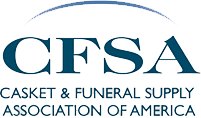There is an old Scottish proverb that holds that it is “an ill wind that blows nobody good.” It seems that with most things there will be winners and losers and that is certainly the case with interest rates.
In the last several months the most pressing economic issue has been inflation. The real rate is now above 7.0% and the core rate stands at 5.5%. The hike in the inflation rate for energy has been staggering at 29.3% and by all accounts these costs will be climbing higher yet. The preferred rate from the perspective of the Federal Reserve is around 3.5% for real inflation and 2.0% for the core. The difference between the two is that core doesn’t take into consideration the prices in energy and food as these are highly volatile categories and that complicates year-over-year or month-over-month comparisons. When rates reach this point the Fed is expected to take action to bring them down and the major tool at their disposal is the Fed Funds Rate.
The statements from the Fed thus far indicate a commitment to hiking rates three times this year, likely by a quarter point each time and starting in March. If the stated goals remain intact the interest rates will be at .75% by year’s end as compared to the current rate between 0.0% and .25%. If the Fed decides on half point hikes the rates might be at 1.5%. These will still be very low compared to past years but these rock-bottom rates have been in place since the recession of 2008 and many have become accustomed to them at this low level.
Even though all eyes are on the Fed they have very limited influence over the factors driving inflation right now. The manipulation of monetary policy is designed to draw cash out of the system but the issue right now is energy and food, and these are not all that responsive to money supply.
Connection between interest rates and inflation
The argument for higher rates generally centers on inflation control. The logic is that inflation is fueled to a degree by too much money in the economy overheating the system. The money supply issue was a bigger factor last year when the U.S. was sitting on almost $3 trillion in excess savings due to the stimulus spend. There are other reasons to want interest rates higher and this point has been made by the “hawks” at the Fed.
The first is that low rates punish traditional savers. There is no interest made available to people who want to put money in a savings account or buy a CD or any other instrument based on interest rates. A second concern is that very cheap money has encouraged investors to borrow huge sums, which they put in the stock market. They assume they will get a nice return and that will allow them to pay that loan back. The worry is that these borrowers (and their banks) will be exposed when there is a correction in the market. This has become a major concern in the last few weeks as the markets are indeed facing that correction. Higher rates will benefit the traditional saver and it reduces some of that risky investor behavior.
There is generally a negative attitude toward higher rates and an assumption that hiking them will be bad for business. There is a silver lining, however. When rates are as low as they have been for the past decade, the banks have very little margin to work with and become very cautious regarding loans. The interest rate hike will allow banks to do deals they might not otherwise consider. The bottom line is that hiking rates a little makes sense in the current inflationary environment and the hikes may also provide stability in the market as well as opportunity for business and consumers in search of bank financing.
Higher rates and the impact on consumer spending
The real estate market watches the interest rate conversation very closely and for the most obvious of reasons. For the last several years there have been contradictory trends in real estate – commercial or residential. On one hand, mortgage rates have been extraordinarily low and that has been the same situation when it comes to commercial property (although there has been considerably more variation depending on the project). At the same time there have been much higher prices. The complicating factor as far as commercial development is concerned is there are significant differences between sectors. At the moment there is intense interest in anything related to warehousing and logistics but relatively little interest in developing office space. Retail has also suffered as has lodging and entertainment. As usual the location of a project matters with some states recovering old patterns faster than others.
Over the last several weeks there has been more and more speculation regarding the potential for a housing bubble burst. This discussion intensifies as mortgage rates climb as there is an assumption that demand will suddenly dry up and those homes that have been selling at record high prices will lose the market demand that has driven these prices so high. It is certainly possible that some markets will experience bubble burst as they have been red hot for years, but three things have to happen for these bursts to become a nationwide issue.
What would create pressure on housing and consumers?
The first is that demand really has to erode – and quickly. The motivation for the demand that has allowed prices to spike is not entirely down to low mortgage rates and low interest rates in general. There are other factors that have not altered much. There are still many millennial buyers coming into the market and still many people looking for homes away from congestion. Remote work allows people to live where they want to as opposed to where they have to. Most cities in the U.S. are still seeing housing shortages.
A second criterion is an interest rate hike sufficient to trigger a retreat from buying. The Fed’s proposed rate hike policy only pushes the rate to between .75% and 1.5%, which is still a very low point. It will price out some first-time buyers but most of the market will not react.
The third is a belief that home prices are truly excessive and buyers will never be able to recoup their investment. In some markets, that may already be true but it remains a seller’s market and that trend continues unless there is an unexpected tightening of credit or a dramatic rise in unemployment. The rate of joblessness is expected to be at record lows in 2022 – around 3.5%. That means people have the income to buy a house – even an overpriced one.
Bringing this home to CFSA members is a matter of watching what all this does to consumer behavior. If the consumer has money in the bank, they have the ability to spend on funerals with reduced price sensitivity. With inflation spiking and savings starting to fade, the level of discretionary spending decreases and funeral costs generally fall into that category. The need to engage in funeral spending is not an option but the level of expenditure is. Higher levels of inflation will point people to less expensive options and this is amplified by differences in the generations. Boomers still orient toward the traditional burial process but Millennials are pushing more toward cremation and other options.
In the last few years, the availability of cheap money has helped drive merger and acquisition activity but as interest rates and inflation rates rise, that availability starts to deteriorate and it becomes harder to finance an acquisition. On the other hand, higher rates may stress some businesses into selling and there will be those that see market share advantage even with the higher financing costs.

Dr. Kuehl will be the keynote speaker at CFSA’s Annual Conference & Trade Show April 25 – 26, 2022, at the JW Marriott in Indianapolis. Hear what he has to say about the current economic situation as well as a preview of his conference address in the latest episode of the CFSA Connect podcast series.



